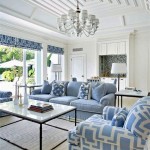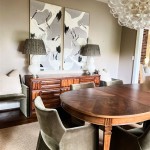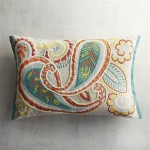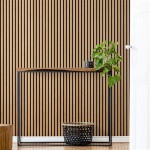Interior Decoration in the Living Room: A Comprehensive Guide
The living room serves as a central hub within the residence, often functioning as a space for relaxation, entertainment, and social interaction. Effective interior decoration of this area involves a cohesive approach, balancing aesthetics, functionality, and personal expression to create a comfortable and inviting environment. Several key elements contribute to a successful living room design, including space planning, color palettes, furniture selection, lighting, and the incorporation of decorative accessories.
Thoughtful planning is paramount before embarking on any decoration project. Analyzing the existing space, considering its dimensions, natural light sources, and existing architectural features is crucial. Understanding the intended primary use of the room—whether it's primarily for watching television, hosting gatherings, or simply relaxing—will inform the choices made regarding furniture arrangement and overall design aesthetic. Consideration should also be given to the flow of traffic within the room to ensure ease of movement.
Space Planning and Furniture Arrangement
Optimal space planning is fundamental to a well-decorated living room. The layout should facilitate comfortable circulation and promote a sense of openness. A common approach is to begin by identifying a focal point within the room, such as a fireplace, a large window with a view, or a statement piece of artwork. The furniture arrangement should then be oriented around this focal point.
Selection of furniture is critical. The size and scale of the furniture should be proportionate to the dimensions of the room. Overly large furniture can overwhelm a small space, while undersized pieces may look lost in a larger area. Before purchasing any furniture, accurately measure the space and create a scaled floor plan to ensure that the pieces will fit comfortably and allow for adequate walking space.
The arrangement of furniture can significantly impact the overall feel of the room. Grouping seating around a coffee table creates a conversation area, ideal for socializing. Placing furniture against the walls can maximize open space, but floating furniture—arranging it away from the walls—can create a more intimate and inviting atmosphere. In smaller spaces, multifunctional furniture, such as a sofa bed or a coffee table with storage, can be particularly valuable.
Consider the use of area rugs to define different zones within the living room. A rug placed beneath a seating arrangement can anchor the furniture and create a cohesive focal point. Choose a rug that is appropriately sized for the area, ensuring that at least the front legs of the sofas and chairs rest on the rug.
Avoid overcrowding the room with excessive furniture. A minimalist approach, focusing on essential pieces that serve specific purposes, often results in a more sophisticated and functional space. Less can indeed be more when it comes to creating a comfortable and stylish living room.
Color Palettes and Material Selection
The choice of color palette significantly influences the mood and ambiance of the living room. Colors can evoke different emotions and perceptions of space. Lighter colors, such as whites, creams, and pastels, tend to make a room feel larger and more airy. Darker colors, such as grays, blues, and greens, can create a more intimate and cozy atmosphere.
When selecting a color palette, consider the existing architectural features of the room and the amount of natural light it receives. In rooms with limited natural light, lighter colors are often preferable to brighten the space. Conversely, in rooms with abundant natural light, darker colors can be used more effectively without making the space feel cramped.
A common approach is to choose a neutral base color for the walls and then incorporate accent colors through furniture, accessories, and artwork. This provides flexibility to update the room's decor without having to repaint the entire space. Accent colors can be introduced in various ways, such as through throw pillows, blankets, curtains, and decorative objects.
The selection of materials also plays a crucial role in the overall design. Consider the texture and pattern of fabrics, flooring, and wall coverings. Natural materials, such as wood, stone, and linen, can add warmth and character to the room. Contrasting textures, such as pairing a smooth leather sofa with a rough-textured rug, can create visual interest and depth.
Pay attention to the quality of materials. Investing in durable and well-made materials will ensure that the living room looks its best for years to come. Choose fabrics that are resistant to wear and tear, especially if the room is used frequently. Opt for flooring materials that are easy to clean and maintain.
Consider the use of paint finishes to add visual interest to the walls. Matte finishes are ideal for hiding imperfections, while glossier finishes can reflect light and make a room feel brighter. Experiment with different paint techniques, such as applying a textured finish or using a stencil, to create a unique and personalized look.
Lighting: Layering and Functionality
Effective lighting is essential for creating a comfortable and functional living room. A well-lit living room should incorporate multiple layers of lighting, including ambient lighting, task lighting, and accent lighting. Ambient lighting provides overall illumination, task lighting provides focused light for specific activities, and accent lighting highlights specific features or objects.
Ambient lighting can be achieved through various sources, such as recessed lighting, chandeliers, or ceiling fixtures. Choose fixtures that provide a soft, diffused light to avoid harsh shadows. Consider using dimmers to adjust the level of ambient light according to the time of day and the activity taking place in the room.
Task lighting is crucial for activities such as reading, writing, or crafting. Table lamps and floor lamps are excellent choices for task lighting. Position them strategically near seating areas to provide adequate light for these activities. Choose lamps with adjustable arms or shades to direct the light where it is needed most.
Accent lighting is used to highlight specific features, such as artwork, architectural details, or decorative objects. Track lighting and spotlights are commonly used for accent lighting. Direct the light onto the object you want to highlight to draw attention to it. Consider using colored light bulbs to create different moods and effects.
Natural light is a valuable asset in any living room. Maximize natural light by keeping windows clean and free from obstructions. Use light-colored curtains or blinds to allow natural light to filter into the room. Mirrors can also be used to reflect natural light and make a room feel brighter.
Consider the color temperature of the light bulbs used in the living room. Warm white light bulbs (2700-3000K) create a cozy and inviting atmosphere, while cool white light bulbs (3500-4100K) provide a brighter and more energetic feel. Choose the color temperature that best suits the overall design aesthetic of the room.
Integrating smart lighting systems can further enhance the functionality and convenience of the living room. These systems allow you to control the lighting remotely, schedule lighting changes, and even create custom lighting scenes for different occasions.
Finally, consider the energy efficiency of the lighting fixtures. LED bulbs are a sustainable and cost-effective option that provides excellent light quality while consuming significantly less energy than traditional incandescent bulbs.
By carefully considering these elements – space planning, color palettes, and lighting – any individual can create a living room that is both aesthetically pleasing and functionally sound.

100 Living Room Interior Designs Designcafe
:strip_icc()/cdn.cliqueinc.com__cache__posts__212361__-2030968-1483470364.700x0c-8571e60cad7b42a981ab29ae10b5c153-497b002f87af4747b2ab38b560e7c0fd.jpg?strip=all)
How To Decorate A Living Room 20 Ideas And Common Mistakes

25 Living Room Interior Design Ideas Havenly

100 Living Room Interior Designs Designcafe

Liven Up Your Living Room With These Interior Design Ideas Goodhomes Co In

A Stylish Modern Apartment Interior Project In South

Modern And Luxurious Living Room Interior Design Ideas

8 Luxurious Living Room Interior Design Ideas For Inspiration Décor Aid
Contemporary Living Room Design Timeless And Iconic

5 Interior Design Ideas For A Luxurious Living Room Skyhomes Development Corp Blog








